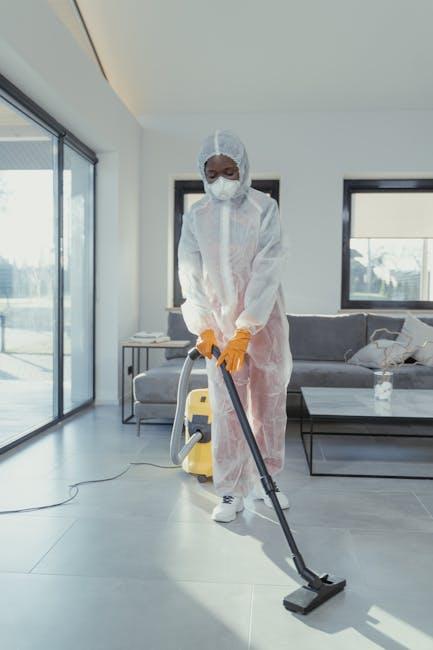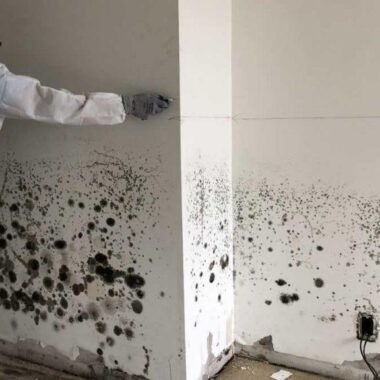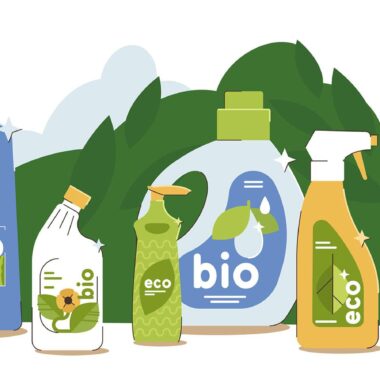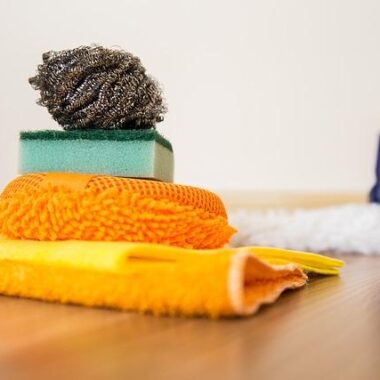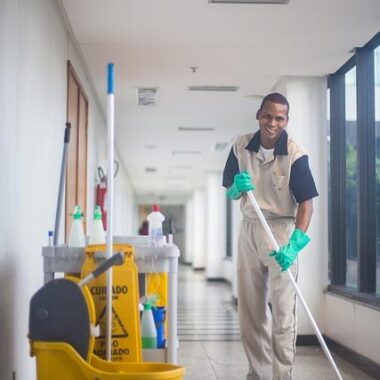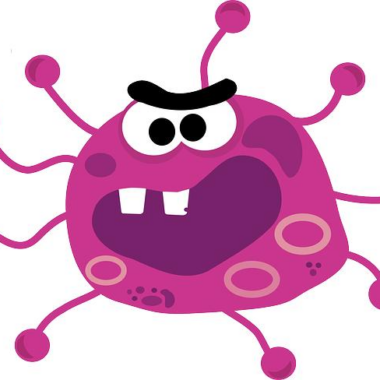Have you ever noticed your child sneezing more than usual, or maybe your partner’s nose is constantly running? Allergies can feel like an unwanted houseguest—always around, often irritating, and sometimes a bit overwhelming. For many families, finding a way to keep those pesky allergens at bay is essential for quality of life. So, how do we tackle this common problem head-on?
Cleaning your home with allergy sufferers in mind can make a significant difference! It’s not just about tidying up; it’s about creating a sanctuary that supports health and happiness. Think of it like preparing your home for a big family event—every surface needs to shine, but with extra care for those invisible intruders that bring discomfort.
In this article, we’ll dive into practical, easy-to-follow cleaning tips tailored specifically for families dealing with allergies. Whether you’re trying to banish dust mites from your bedding or keep pet dander in check, we’ve got you covered. Grab your favorite cleaning supplies, and let’s turn your home into an allergen-free haven!
Table of Contents
- Protecting Your Home: Key Areas to Focus on for Allergy-Friendly Cleaning
- Decluttering for a Dust-Free Zone: Why Less is More
- Clean Those Air Filters: The Essential Maintenance Task You Might Be Forgetting
- Choosing the Right Cleaning Supplies: What to Look For
- The Power of Regular Vacuuming: Tips for Allergy-Safe Techniques
- Natural Cleansers for a Healthy Environment: Ditching Harsh Chemicals
- Creating an Allergy-Proof Bedroom: Tips for a Safe Sleep Space
- The Often Overlooked Areas: Deep Cleaning Your Home the Right Way
- Keeping Your Pets Happy and Your Home Allergy-Free: Practical Strategies
- Q&A
- In Conclusion
Protecting Your Home: Key Areas to Focus on for Allergy-Friendly Cleaning
Keeping your home clean is crucial for minimizing allergens, and there are specific areas that deserve extra attention. Start with your bedrooms; this is where you spend a significant amount of time. Ensure to wash your bedding in hot water weekly. Dust mites love a good warm, cozy bed, so consider using protective covers for pillows and mattresses that are allergy-friendly.
Your living room is another hotspot for allergens, especially if you have pets. Regularly vacuum your furniture and carpets using a vacuum equipped with a HEPA filter. This will help trap tiny particles that tend to linger. Don’t forget to clean those forgotten fan blades and air ducts, as they can stir up dust and allergens. A simple wipe-down can make a big difference!
Moving to the kitchen, this area can be a breeding ground for mold if not kept dry and clean. Make sure to regularly check for any signs of moisture under the sink or in hard-to-reach corners. Also, keep your refrigerator and pantry organized and clean. Spoiled food can trigger allergies, so dispose of expired items regularly.
In the bathroom, moisture is your enemy. Always use exhaust fans to diminish humidity after hot showers. Mold thrives in damp environments, so regularly clean areas like tile grout and around the shower. Utilize mold-resistant cleaners and consider sealing grout lines to prevent mold growth.
One often-overlooked area is the entryway. This is the first place where allergens might enter your home. Implement a no-shoe policy indoors to prevent dirt and pollen from being tracked throughout your home. Adding a durable mat outside your door helps catch debris before it even makes it inside. Regularly clean this area, too—sweeping and vacuuming can help keep allergens at bay.
Lastly, don’t forget about the air you breathe! Maintaining your HVAC system with regular filter changes will improve air quality significantly. Consider installing an air purifier in your home to capture airborne allergens. By focusing on these key areas, you can create a more allergy-friendly environment for you and your family.
Decluttering for a Dust-Free Zone: Why Less is More
We all know the feeling of stepping into a cluttered space: it can be overwhelming, right? But did you know that all that excess stuff can actually contribute to allergy flare-ups? Dust mites, pet dander, and pollen love to hide in those forgotten corners and beneath stacks of magazines. By taking a closer look at your belongings and simplifying your space, you can create a dust-free zone that feels fresh and inviting. Less really is more when it comes to your home environment.
Start by evaluating your items. Go room by room and ask yourself, “When was the last time I used this?” If it’s been more than a year, it’s likely taking up space for no good reason. Consider creating a designated spot for items you’re unsure about—like a “maybe” box. After a month, if you haven’t reached for anything in there, it’s time to let it go. This method doesn’t just clear out clutter; it also reduces the surfaces where dust can accumulate.
Remember to tackle those hidden areas too. Behind furniture and under beds can become dust hotspots. Regularly moving things around not only keeps your home looking tidy but also improves air quality. Cleaning these neglected spots goes a long way in minimizing allergens. Plus, you might uncover that antique lamp or decorative item you forgot you had, giving it a new life in your decluttered space!
Consider creating storage solutions that are easy to maintain. For instance, baskets and bins can neatly hide away toys, books, or blankets. You might also want to introduce some shelves to vertically store items, making your space more open. The less clutter you have out in the open, the fewer dust-collecting surfaces exist. This can significantly decrease the need for constant cleaning, allowing you to breathe easier at home.
Another crucial element is to regularly assess your cleaning routine. If you’re spending countless hours dusting and vacuuming, it might be time to rethink your approach. Commit to using a microfiber cloth that captures dust instead of spreading it around. Additionally, investing in a good air purifier can work wonders, particularly if it’s equipped with HEPA filters that trap the tiniest particles. Pairing these strategies with decluttering will maximize your efforts in keeping dust at bay.
don’t forget the benefits of a minimalist lifestyle. Studies show that reducing clutter can lead to reduced stress and improved mental health. When you surround yourself with only the items you truly love and use, your space transforms into a sanctuary. In return, you and your family can enjoy a healthier home, where cleaner air means less sneezing and fewer allergy attacks. So why not start decluttering today?
Clean Those Air Filters: The Essential Maintenance Task You Might Be Forgetting
Have you ever thought about the unseen enemies lurking in your home? If you’re one of the many people who battle allergies, then the condition of your air filters might not even cross your mind—until it’s too late. Clean air filters can make a world of difference, not just for your breathing but for your overall health and comfort. Think about it: your HVAC system works tirelessly to keep your home cozy, but when the filters get clogged, it can pump dust, pollen, and other allergens right back into your living space. Not cool, right?
So, let’s get practical. Regular maintenance of your air filters isn’t just recommended; it’s essential. Here’s a quick checklist to keep you on track:
- Check your filters every month: It only takes a minute.
- Change or clean filters every 3 months: Depending on the type, some filters need a little more TLC.
- Consider upgrading to HEPA filters: These can trap even the smallest particles, significantly reducing allergens.
Did you know that different types of filters require different maintenance? For instance, reusable filters are great for saving money and reducing waste, but they require regular cleaning. If you have these, rinse them with water and allow them to dry completely before reinstalling. On the other hand, disposable filters are set-and-forget – just pop them out and replace every few months. Which method works for you?
Let’s make this even simpler. Here’s a quick reference table to illustrate filter types and their maintenance needs:
| Filter Type | Maintenance Frequency | Cleaning Method |
|---|---|---|
| Reusable Filters | Every month | Rinse & dry |
| Disposable Filters | Every 1-3 months | Replace |
| HEPA Filters | Every 6 months | Replace |
One of the most satisfying feelings is when you pop in a fresh filter and instantly notice how much better the air feels. It’s like breathing clean mountain air from the comfort of your living room! Just remember, if you’re feeling particularly congested or stuffy, consider checking your filters right away. The time you spend tackling your filter maintenance is more than worth it when compared to the relief your family will feel.
In a world where we can control so many aspects of our lives, shouldn’t air quality be one of them? By prioritizing routine air filter maintenance, not only are you setting your family up for better health, but you’re also extending the lifespan of your HVAC system. Now that’s a win-win. So, let’s roll up those sleeves, check those filters, and make breathing easy again!
Choosing the Right Cleaning Supplies: What to Look For
When it comes to keeping your home clean while managing allergies, the right cleaning supplies can make all the difference. So, what should you keep in mind when selecting these essentials? First off, you want to ensure they are non-toxic. Many conventional cleaning products can release harmful fumes that may irritate allergies or asthma. Look for supplies labeled as biodegradable or environmentally friendly; your lungs will thank you!
Another important aspect is hypoallergenic formulations. Products that boast hypoallergenic ingredients are less likely to trigger reactions. Opt for cleaners designed specifically for allergy sufferers, as they often skip out on harsh chemicals and fragrances that can exacerbate symptoms. Think of it this way: just like you wouldn’t wear tight shoes on a long walk, you don’t want to expose your home to irritants when you’re trying to breathe easy.
Don’t forget about the power of scent. While many cleaning products come with strong fragrances intended to mask odors, they can often do more harm than good for allergy sufferers. Consider using unscented products or those made with natural essential oils that provide a fresher, cleaner smell without the added chemicals. Your home can smell amazing without putting your health at risk!
Multi-purpose cleaners are your best friends when it comes to efficiency. Look for versatile products that can tackle various surfaces around your home, from countertops to bathrooms. This not only simplifies your cleaning routine but also helps minimize the number of products you need to store—fewer items mean less clutter, which can help keep dust and allergens at bay.
Additionally, consider the packaging of the products you choose. Many cleaning supplies are now offered in refillable or recyclable containers, which is great not just for the planet but also for your home. Bulk buying or purchasing refills can reduce waste and your exposure to plastic that may leach harmful substances into the environment.
Lastly, take into account your personal preference. If you prefer DIY alternatives, you can whip up your own cleaning solutions using ingredients like vinegar and baking soda. These items are not only affordable but incredibly effective and safe for your family. A little creativity can lead to a cleaner home while steering clear of allergens!
The Power of Regular Vacuuming: Tips for Allergy-Safe Techniques
Keeping your home allergen-free can often feel like a daunting task, but regular vacuuming is one of the most effective strategies to combat those pesky triggers. When it comes to vacuuming, it’s not just about making your floors look neat; it’s about creating a healthier living space for your family. With the right techniques, we can make vacuuming a powerful weapon against allergens.
First things first, choosing the right vacuum cleaner is essential for allergy sufferers. Look for models equipped with HEPA filters, which can trap up to 99.97% of dust, pollen, and pet dander. Investing in a vacuum with strong suction power can make a world of difference. It’s similar to how a good pair of sneakers can boost your running performance; the right vacuum can enhance your cleaning effectiveness!
Now, let’s talk technique. When vacuuming, start from the top down. Dust and allergens tend to settle downward, so working from the top of a room to the bottom ensures you’re capturing everything in one go. This includes curtains, blinds, and even ceiling fans. Here’s a quick checklist to follow:
- Dust all surfaces first with a damp cloth.
- Vacuum ceilings and higher areas if possible.
- Target upholstery and furniture with appropriate attachments.
- Finish with the floors, paying extra attention to corners.
Consistency is key! Establish a vacuuming routine that works for your schedule. For most families, vacuuming at least once a week is a good starting point. If you have pets or multiple family members who trigger allergies, you might want to up that frequency to two or three times a week. Just think of it like a healthy diet—regular “cleaning meals” can lead to a more balanced and allergen-free home.
Don’t forget to clean your vacuum too! It might sound a bit odd, but if your vacuum is clogged with dust and debris, it’s basically spewing allergens back into the air. Make it a habit to check filters and empty the canister (or bag) regularly. You wouldn’t use the same dirty frying pan each time you cook, right? The same logic applies here!
consider adding a few allergy-friendly products to your cleaning arsenal. There are specially designed vacuum attachments on the market that can help with pet hair and dander. Liquid sprays that clean and deodorize the air as you vacuum can also enhance your effort. These products can ensure your living space is not just clean, but truly safe for allergic family members.
Natural Cleansers for a Healthy Environment: Ditching Harsh Chemicals
Switching to natural cleansers is one of the best steps you can take for both the health of your family and the environment. Not only do they reduce exposure to harmful chemicals, but they also help in creating a fresh, breathable space at home. Let’s explore some simple, effective alternatives that can easily replace those harsh cleaners.
First off, vinegar is an age-old favorite among natural cleaning enthusiasts. Its acidity cuts through grime and grease effortlessly. Use it to clean windows or disinfect countertops. Just mix equal parts of water and vinegar in a spray bottle, and you’re set! It’s not just good for surfaces, but it can also help eliminate odors, leaving your home smelling fresh.
Next up is baking soda, your trusty sidekick in the quest for cleanliness. It’s fantastic for scrubbing surfaces without scratching them. A paste of baking soda and water works wonders on sinks, tubs, and even those stubborn stains on the kitchen counter. Plus, it’s a natural deodorizer! Just sprinkle some in your fridge or trash can to keep smells at bay.
Don’t overlook the power of lemon juice. Not only does it leave surfaces sparkling, but it also smells amazing. Lemons have natural antibacterial properties, making them perfect for cutting boards and kitchen surfaces. Combine it with baking soda for an extra cleaning boost, and you’ve got a natural scrub that’s tough on stains but gentle on your home.
Essential oils, like tea tree oil or lavender oil, are fantastic for adding a fragrant touch while providing additional antimicrobial properties. Just a few drops in your vinegar or baking soda mixtures can elevate your cleaning game. Think of it as aromatherapy while you scrub! You’ll not only be cleaning but also creating a pleasant atmosphere that can soothe allergies.
don’t forget about the power of cornstarch! This versatile ingredient can be used to clean windows, polish furniture, and even freshen up carpets. Just sprinkle some cornstarch on the surface or carpet, let it sit for a bit, and vacuum it up. It’s a fantastic way to absorb odors without introducing any unpleasant chemicals into your living space.
| Natural Cleanser | Uses | Benefits |
|---|---|---|
| Vinegar | Window cleaner, odor eliminator | Non-toxic, effective against grime |
| Baking Soda | Scrubbing surfaces, deodorizing | Gentle, versatile, affordable |
| Lemon Juice | Surface cleaner, stain remover | Fresh scent, antibacterial |
| Essential Oils | Fragrance enhancer, antibacterial | Soothing aroma, multiple benefits |
| Cornstarch | Window cleaner, fabric freshener | Absorbs odors, easy to use |
Creating an Allergy-Proof Bedroom: Tips for a Safe Sleep Space
Creating an allergy-proof bedroom is a crucial step in ensuring a peaceful night’s sleep for you and your loved ones. Allergens can hide in the most unexpected places, turning your cozy retreat into a sneezing ground. Fortunately, a few easy changes can transform your bedroom into a safe haven. Let’s dive into some practical tips that can make a significant difference!
Start with the Bedding: Did you know that your bedding can be a major allergy trigger? Dust mites love to snuggle into pillows and blankets, so it’s time to switch things up. Opt for hypoallergenic covers for your mattresses and pillows. Not only will they help keep allergens at bay, but they also make for a snugger sleep environment. Regular washing of your sheets in hot water can wipe away dust mites and create a cleaner space to rest your head.
Curtains and Carpets: If you have heavy curtains or carpets, it might be time for a makeover. These fabric-heavy elements harbor dust and allergens like a sponge! Consider replacing them with blinds or shades that can be easily wiped down. For flooring, hardwood or laminate can help minimize allergens, while area rugs can be washed regularly. Plus, they can add a splash of personality to your space!
Keep the Air Clean: It’s not just about what you can see; it’s about what you can breathe too! Invest in a good air purifier designed to trap allergens. Look for models with HEPA filters; they can filter out at least 99.97% of dust, pollen, and smoke. Regularly changing the filters in your HVAC system will also keep your indoor air clean and fresh.
Declutter Regularly: Clutter is an allergen magnet. Take a good look around your room and eliminate items that collect dust. Think of it as a mini spring cleaning session! Store away knick-knacks and books in closed cabinets, and keep surfaces easy to wipe down. A clear space is not only visually pleasant but will also help you sleep better.
Plants: Friend or Foe?: While bringing nature indoors can be soothing, some plants can worsen allergies. If you love greenery, choose hypoallergenic plants, like spider plants or peace lilies, that don’t release a lot of pollen. Keeping them in your space can purify the air while adding a touch of tranquility without compromising comfort.
The Often Overlooked Areas: Deep Cleaning Your Home the Right Way
When it comes to deep cleaning your home, it’s easy to focus solely on the obvious areas, but what about those sneaky spots that often get overlooked? Believe it or not, these hidden nooks can harbor dust, allergens, and even mold, which can trigger allergies and asthma symptoms. Let’s shine a light on these neglected areas and ensure your home is a safe haven for your family.
1. The Underside of Furniture
You might not think about it, but the underside of your couches, chairs, and even tables can gather dust and pet hair. Moving furniture around for a thorough clean isn’t just a workout; it’s a necessity. Try using a vacuum hose or a microfiber cloth to catch all the dust bunnies that have made themselves at home. Remember, that sneaky spot is just as important as the top surfaces!
2. Baseboards and Crown Molding
Dust loves to settle on baseboards and crown molding, often escaping your cleaning routine. So why not make cleaning these surfaces a regular habit? Grab a damp cloth and run it along these edges while you’re already tackling floors or dusting. This small effort can help minimize the dust in the air and keep your home looking sharp.
3. Behind Appliances
Have you ever pulled your fridge away from the wall? You might be surprised by the amount of dust and crumbs lurking behind it! Regularly moving out your appliances to clean can drastically reduce allergens in your environment. Just a few minutes spent cleaning behind your microwave, stove, or washer can prevent buildup and improve your indoor air quality.
4. Ceiling Fans and Light Fixtures
Ceiling fans and light fixtures are often forgotten during the weekly cleaning sprint. Dust collects quickly, and every time you switch on the fan or flick a light, those allergens can disperse throughout your living space. Use a damp cloth or a specialized fan duster to keep these areas clean and prevent dust from entering the air you breathe.
5. Air Filters and Vents
Don’t overlook your HVAC system! Dirty air filters can circulate allergens throughout your home. It’s crucial to check and replace these filters regularly, typically every 3 months or according to the manufacturer’s instructions. You can also vacuum out vents and registers to ensure your system is running efficiently and cleanly.
6. The Forgotten Bathroom Corners
Mold and mildew thrive in bathrooms, especially in corners where moisture can build up. Pay special attention to grout lines and the areas around tubs and sinks. Scrubbing these spots with a mixture of vinegar and water can help keep them clean and stop allergens in their tracks. A little effort here goes a long way in maintaining a healthy household!
Keeping Your Pets Happy and Your Home Allergy-Free: Practical Strategies
Keeping our furry friends happy while ensuring our homes remain allergy-free doesn’t have to be a major challenge. It’s all about finding that sweet balance! Start with some simple steps that keep your pets content while minimizing allergens. Regular grooming can work wonders. Did you know that frequent brushing can drastically reduce the amount of pet dander in your home? Aim to brush your pets at least once a week—more often if they have longer fur. It’s an excellent excuse to snuggle, too!
Next up, let’s talk about where your pets chill. If your furry buddy has a favorite spot on the couch, consider getting a washable pet blanket. Regularly launder it to catch any stray hairs and dander. And while you’re at it, vacuum those spaces often! Choose a vacuum equipped with a HEPA filter; these powerhouses trap allergens effectively and keep your home’s air fresher.
Don’t forget about air quality! Air purifiers can be your best friend, especially if you have both pets and allergies. Place these gadgets in high-traffic areas where your pets hang out the most. They can help filter out allergens, including pet dander, and keep the air in your home feeling crisp. For a little extra boost, consider keeping houseplants that can naturally purify your air. Just be sure to check that they’re pet-friendly!
When it comes to cleaning, choose allergen-friendly products. Strong chemical cleaners can irritate allergies and skin. Look for eco-friendly brands or simple solutions like vinegar and baking soda—trust us, they work wonders! Here’s a quick table to keep track of safe cleaning options:
| Product | Use |
|---|---|
| Baking Soda | Deodorizing carpets and furniture |
| White Vinegar | Neutralizing pet odors |
| Castile Soap | All-purpose cleaner |
Don’t forget about regular training! Believe it or not, teaching your pets to stay off certain furniture or out of specific rooms can result in fewer allergens. Plus, it can make cleaning a breeze. Start with small boundaries and reward them with treats or affection when they follow the rules. Remember, consistency is key!
Lastly, creating designated pet zones can transform your home. Think about setting up cozy areas with pet beds or crates in specific rooms. Not only does this help contain pet hair and dander, but it also gives your furry friends a space of their own. It’s like giving them a VIP lounge while keeping your main living areas fresher!
Q&A
Q&A: Protect Your Family from Allergies with These Cleaning Tips
Q: What are the first steps I should take to prepare my home for allergy sufferers?
A: Great question! You’ll want to start with a deep clean. Dust and pollen buildup can really trigger allergies. So, think of it like spring cleaning, but whenever you notice the sniffles. Start by vacuuming your carpets with a HEPA filter vacuum and wash your bedding in hot water once a week. It might feel a little overwhelming initially, but trust me, the relief it brings is totally worth it!
Q: Are there specific cleaning products I should avoid?
A: Absolutely! You wouldn’t believe how many common household cleaners can make allergies worse. Look out for things with strong fragrances or harsh chemicals. Opt for fragrance-free or natural cleaning products instead. You can even create your own with ingredients like vinegar and baking soda, which are not only effective but also allergy-friendly. It’s like a decorating project without the chaos!
Q: How often should I clean to keep a home allergy-friendly?
A: Consistency is key here! Try to dust surfaces at least once a week and vacuum a couple of times a week if you have furry friends. Don’t forget those hidden spots—think under the couch and behind appliances! Setting a simple schedule can help keep your home in top shape. Maybe make it a family fun day with music and teamwork!
Q: What about air quality? Any tips for that?
A: You bet! Clean air is like a breath of fresh… air! Consider investing in an air purifier, especially in bedrooms or common areas. Also, regularly change your HVAC filters. If you can, avoid using scented candles or air fresheners, as they often contain irritants. Another pro tip? Open those windows when you can! Fresh air can do wonders.
Q: Are there specific allergens I should keep an eye out for while cleaning?
A: Yes, for sure! Keep a lookout for dust mites, pet dander, and mold, as these are common culprits. Regularly clean your pets’ bedding and wash their toys too. And if you live in a humid area, consider using a dehumidifier; it’s like giving mold the boot!
Q: How can my family help out in keeping the home allergy-friendly?
A: Teamwork makes the dream work! Encourage the kids to tidy up their spaces; even little ones can help with dusting or putting away clothes. This not only lightens your load but teaches them about taking care of their environment. Plus, a family chore chart can make it a fun challenge!
Q: What should I do if my family member still experiences allergy symptoms despite cleaning?
A: If symptoms persist, it might be a good idea to consult with an allergist. They can offer specific insights tailored to your family’s needs. And remember, even the cleanest homes can still harbor hidden allergens. Take a deep breath, and don’t hesitate to reach out for professional advice—you’re not alone in this!
By addressing these questions, you’re well on your way to creating a cleaner, healthier home for your loved ones. Let’s ditch those allergy triggers together! For more tips or to share your story, feel free to reach out; we’re here to help!
In Conclusion
tackling allergies at home can feel overwhelming, but with the right cleaning tips and strategies, we can create a safer and more enjoyable environment for our loved ones. Remember, we’re in this together! By incorporating these simple practices into your routine, you’re not just cleaning; you’re actively contributing to your family’s well-being.
Let’s face it – no one wants to see their kids struggle with sniffles when they could be out playing. And while we can’t control everything, we can certainly take charge of our indoor spaces. So, why not put these tips into action today and see how much easier it is to breathe easy at home?
If you have your own cleaning hacks or experiences to share, drop them in the comments! Together, we can build a community that’s dedicated to keeping our families allergy-free. Ready to take those steps? Let’s get started!

